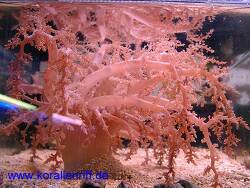Info
Actinodendron plumosum are commonly seen in lagoon sand and Halimeda patches.
Its stalk is well down into the substrate, and if disturbed, the entire anemone will quickly withdraw under the sand.
One of the fire anemones with nematocysts on the tentacles can deliver a painful sting.
Are often occupied by commensal shrimp Ancylocaris brevicarpalis and Ancylomenes tosaensis.
Synonym:
Actinodendron plumosa







 Scott & Jeanette Johnson, Kwajalein Unterwater
Scott & Jeanette Johnson, Kwajalein Unterwater






